
Pheromone Chemicals
Manufacturers of Pheromone Traps & Lures

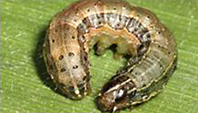
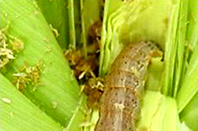
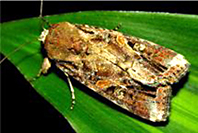
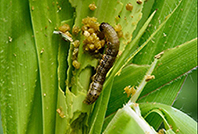
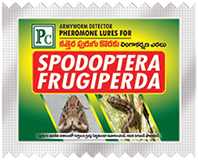
Spodoptera frugiperda
Fall armyworm) – is a lepidopteran pest that feeds in large numbers on the leaves and stems of more than 80 plant species, causing major damage to commercial crops such as cotton, maize, rice, sorghum, sugarcane and also other vegetable crops.
Life cycle :
Egg : Eggs are spherical (0.75 mm diameter); they are green at the time of oviposition and become light brown prior to eclosion. Egg maturity takes
2-3 days (20-30°C). Eggs are usually laid in masses of approximately 150-200 eggs. Up to 1000 eggs may be laid by each female.
Larvae : Larvae are a light green to dark brown with longitudinal stripes. In the sixth instar, larvae are 3-4 cm long. Larvae have eight prolegs and
a pair of prolegs on the last adbominal segment. On hatching they are green with black lines and spots, and as they grow they either remain
green or become buff-brown and have black dorsal and spiracular lines. If crowded (by a high population density and food shortage) the final
instar can be almost black in its armyworm phase. Large larvae are characterized by an inverted Y-shape in yellow on the head, black dorsal
pinaculae with long primary setae (two each side of each segment within the pale dorsal zone) and four black spots arranged in a square on
the last abdominal segment. There are usually six larval instars, occasionally five.
Host plants :
Maize, Sorghum, Sugarcane, Soybean, Rice, Millets and Cotton.
Damage :
Larvae cause damage by consuming foliage. Young larvae initially consume leaf tissue from one side, leaving the opposite epidermal layer intact. By the second or third instar, larvae begin to make holes in leaves, and eat from the edge of the leaves inward. Larval densities are usually reduced to one to two per plant when larvae feed in close proximity to one another, due to cannibalistic behavior. Older larvae cause extensive defoliation, often leaving only the ribs and stalks of corn plants, or a ragged, torn appearance. Presence of larvae during the late whorl stage could reduce yield by 5 to 20 percent.
ETL for Spodoptera frugiperda is 8-10 No’s of moths per trap per day.
Use 10 No’s Pheromone Traps per acre. Install within 1-week of crop stage for best results.
Trap canopy should be placed one feet above crop canopy to achieve optimum catch.
Recommended trap model: Phero-Sensor-SP™ or Phero-Sensor - BP™
Recommended for: Maize, Sorghum, Rice, Sugarcane, Soybean, Millets, and other crops.
© 2020 Pheromone Chemicals. All Rights Reserved | Powered by: Raviteja Designs